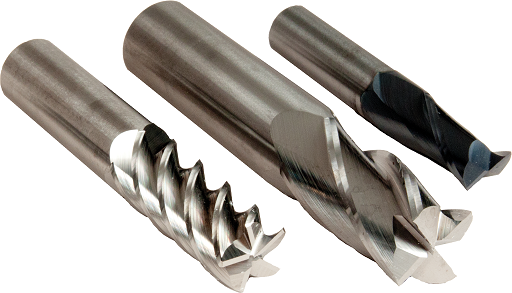In the intricate world of machining, where precision is paramount, the choice of tools can make or break a project. End mills stand as crucial players among these tools, but their effectiveness is profoundly influenced by the material they’re meant to cut.
In this guide, we delve into the art of selecting the right end mills based on your workpiece material.
The Significance of Material Compatibility
Machining is a complex dance between cutting tools and workpiece materials. The compatibility between the two determines the success of the performance. Using the wrong end mill for a particular material can lead to a litany of issues, including subpar finishes, accelerated tool wear, and even damage to the workpiece itself. This is where the adage “materials matter” rings true.
Overview of Common Workpiece Materials
Before we delve into the intricacies of end mill selection, let’s familiarize ourselves with the usual suspects in the machining world:
- Metals: These include steel, aluminum, brass, and more. Each metal has distinct characteristics that influence end mill choice.
- Wood: A diverse material that requires specialized end mills to achieve precision cuts and smooth finishes.
- Plastics: These materials demand finesse, as they can melt or deform under the wrong tooling.
- Composites: A combination of materials that often require tailored end mills due to their unique properties.
Choosing the Right-End Mill for Metals
Metals present diverse challenges due to hardness, abrasiveness, and heat resistance differences. To choose the right end mill for metals, consider the following:
- Material Hardness: For harder metals like steel, carbide end mills, including extended-length end mills, are ideal. High helix end mills can efficiently remove chips and prevent tool wear.
- Coatings: Coated end mills, such as those with TiN, TiCN, or TiAlN coatings, enhance tool life and cutting performance in metal machining.
Choosing the Right-End Mill for Wood
Woodworking is all about precision and aesthetics. To select the right end mill for woodworking, look for:
- Flute Count: For clean and precise cuts in wood, opt for end mills with multiple flutes that evacuate chips efficiently.
- Profile: Choose end mills with sharp cutting edges and the appropriate geometry for your woodworking project.
Choosing the Right-End Mill for Plastics
Plastics demand finesse to prevent melting or chipping. When working with plastics, consider:
- High Helix End Mills: These end mills with high helix angles minimize heat buildup and help maintain material integrity.
Choosing the Right-End Mill for Composites
Composites are a unique challenge due to their layered structure. When machining composites:
- Tool Geometry: Use end mills with specialized geometries designed for composite materials to reduce delamination and ensure clean cuts.
Considerations Beyond Material Type
Material-specific machining isn’t just about end mill selection. Cutting speed, feed rate, depth of cut, and tool diameter all play vital roles in achieving the best results for your workpiece material.
The Role of Coatings in Material Compatibility
Coatings on end mills can enhance tool performance and durability, especially in demanding materials. Consider coatings like TiN, TiCN, or TiAlN for various material types.
Wrapping Up:
In the realm of machining, the choice of end mills cannot be underestimated. Materials matter, and selecting the right end mill for your workpiece material is the key to unlocking precision and achieving impeccable machining results. Explore Burrs4less selection of end mills today.



